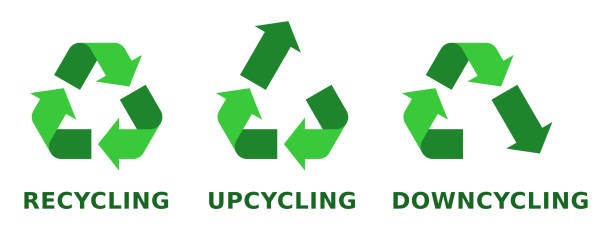The Business of Recycling: How County-Level Programs Can Save Money and Foster Sustainable Economic Growth
How county-level recycling programs can reduce costs, boost economic growth, and promote sustainability. By upcycling waste into marketable products like bricks, tiles, and insulation, counties can save on landfill fees, generate revenue, and create jobs. Although recycling can be more expensive due to collection, sorting, and processing, it offers long-term environmental benefits such as reducing greenhouse gases and conserving resources. The article encourages innovative strategies like public-private partnerships and efficient technologies to enhance the profitability and impact of local recycling efforts.
10/10/20246 min read


The Business of Recycling: How County-Level Programs Can Save Money and Foster Sustainable Economic Growth
The increasing pressure to manage waste effectively and creatively has sparked interest in recycling business ventures, specifically upcycling. While small-scale recycling startups may struggle to achieve profitability without creating tangible end products, there is a significant opportunity for county-level recycling programs that can yield substantial financial benefits and economic growth.
Understanding Profitability through Upcycling
After exploring various recycling business ideas, it becomes clear that profitability hinges on the ability to transform recycled materials into useful, marketable products.
Here are a few examples of products that can be manufactured using recycled resources:
Bricks: Made from recycled concrete, glass, or other materials, these can serve as sustainable building options.
Insulation: Composed of recycled paper, denim, or plastic, this product provides energy efficiency in homes and buildings.
Flooring: Produced from recycled wood, rubber, or plastic, sustainable flooring options appeal to environmentally conscious consumers.
Tiles: Manufactured from recycled glass or ceramics, these tiles can add aesthetic value to numerous applications.
By cultivating a recycling facility at the county level that produces these materials, numerous small businesses could thrive, creating a symbiotic relationship that benefits the entire community.
Cost Savings from Landfill Diversion
One of the most compelling arguments for robust county-level recycling programs is the significant cost savings associated with diverting waste from landfills. The expenses related to landfill disposal can be staggering, and research has shown that counties can save anywhere from 30% to 50% by effectively implementing recycling initiatives. Here’s how:
Reduction of Landfill Fees: Fewer materials being sent to landfills means less need to pay hefty disposal fees, ultimately lowering operational costs for the county.
Operational Efficiency: A well-organized recycling program can streamline waste management processes, making them more efficient and reducing labor costs.
Environmental Impact: Reducing landfill use not only saves money but also mitigates the environmental impact associated with waste disposal, leading to healthier communities.
Revenue Generation through Material Sales
The establishment of a county-run recycling facility can generate additional revenue by selling processed materials to businesses that require recycled inputs. The market for recycled materials has been steadily growing, and counties that capitalize on this trend can benefit financially. For example:
Selling Recycled Materials: Various industries, from construction to textiles, rely on recycled inputs. By producing high-quality materials like recycled glass, plastics or metals, counties can tap into this lucrative market.
Creating Jobs: A recycling facility can also create jobs, from collection and processing to research and development of new products, contributing to the local economy.
Accessing Government Grants
The push for sustainability has led to increased availability of grant funding for programs that support recycling and waste diversion initiatives. Many government programs are designed to encourage eco-friendly practices, presenting an opportunity for counties to sanction recycling facilities without bearing the entire financial burden.
Possible funding sources include:
Federal and State Grants: Numerous government entities offer grants to local governments or organizations that promote sustainability initiatives. Being proactive and applying for these funds can significantly reduce or eliminate startup costs.
Partnerships with NGOs: Nonprofit organizations dedicated to environmental sustainability often provide support and funding for recycling initiatives. Collaborating with these entities can enhance program credibility and attract additional financial resources.
Fostering Sustainable Small Business Growth
The ripple effect of developing a county-level recycling program cannot be understated. As sustainable practices become standard, small businesses can benefit immensely from a supportive ecosystem:
Supply Chain Resilience: Small businesses that rely on recycled materials will find it easier to source high-quality inputs locally, reducing transportation costs and reliance on far-flung supply chains.
Market Demand for Sustainable Products: As consumer awareness and preference for sustainable products grow, small businesses that utilize recycled materials can achieve a competitive advantage.
Community Engagement: A county-level recycling initiative creates awareness and interest in sustainability among residents, encouraging local entrepreneurship focused on green business practices.
Opposing Views: The Economics of Recycling vs. Landfilling
The disparity in costs between recycling and landfilling can be quite stark, as seen in the example of author, Harvey Black, of the Environmental Health Perspectives Journal, San Jose, California, where it costs significantly more to recycle materials than to simply send them to a landfill. Similarly, in Atlantic County, New Jersey, the revenue generated from selling recyclable goods falls short of covering the expenses associated with collecting, sorting, and maintaining the recycling infrastructure. These scenarios are not unique and are reflected in many communities around the country.
Recycling Is More Expensive
Collection and Sorting: The process of collecting recyclable materials is labor-intensive and requires specialized equipment and sorting facilities. Unlike waste that goes directly to landfills, recyclables must be separated by type—plastic, paper, glass, metals, etc.—which adds layers of complexity and cost.
Processing Facilities: Recycling facilities often require advanced machinery and technology to clean, break down, and repurpose the materials. Maintaining these facilities and paying off their construction costs, as in the case of Atlantic County, can be a financial burden on municipalities.
Market Volatility: The value of recyclable materials fluctuates with market demand. When the market for materials like plastics, paper, or metals is low, the revenue generated from their sale might not cover the costs of processing. This issue has been exacerbated by recent global changes in recycling policies, such as China’s ban on imported recyclables, which has reduced the demand for these materials and driven down prices
The Hidden Costs of Landfills and Incineration
While landfilling or incineration might seem more cost-effective on the surface, there are hidden environmental and societal costs to consider:
Methane Emissions: Landfills are one of the largest sources of methane, a potent greenhouse gas that contributes to climate change.
Leachate Contamination: Landfills can produce leachate, a toxic liquid that can seep into the soil and contaminate groundwater, posing a threat to local ecosystems and human health.
Air Pollution from Incineration: While incineration reduces the volume of waste, it releases harmful pollutants into the atmosphere, including carbon dioxide, heavy metals, and dioxins.
Weighing Environmental Benefits Against Costs
Despite the higher upfront costs, recycling offers significant environmental and health benefits that outweigh the economic burden in the long run:
Resource Conservation: Recycling reduces the need for raw materials, conserving natural resources like timber, minerals, and water. This, in turn, reduces the environmental impact of mining, logging, and other extractive processes.
Energy Savings: Producing goods from recycled materials generally uses less energy compared to manufacturing from virgin resources. For example, recycling aluminum saves up to 95% of the energy required to produce new aluminum from bauxite ore.
Reduction of Greenhouse Gases: Recycling helps cut down on greenhouse gas emissions by reducing the energy consumption involved in raw material extraction and processing.
Community and Long-Term Impacts
Job Creation: The recycling industry creates significantly more jobs than landfilling or incineration. Jobs are created in the collection, sorting, and processing stages, as well as in the development of new products from recycled materials.
Sustainability Goals: Many cities and counties have ambitious goals to reduce waste and move towards a circular economy. Investing in recycling infrastructure and education can help communities transition away from a disposable culture to one that prioritizes sustainability and resource efficiency.
Proponents’ Perspective: Investing in the Future
Advocates of recycling argue that the higher costs should be viewed as an investment in a sustainable future. They emphasize that recycling reduces dependence on non-renewable resources, decreases environmental pollution, and helps combat climate change. Although recycling programs may not always be financially self-sufficient, the long-term benefits to public health, ecosystems, and the global climate justify the expense.
Striking a Balance
For county-level programs, the key to success lies in balancing costs with the environmental impact. Innovative approaches like public-private partnerships, community education on proper recycling practices, and investments in more efficient technologies can help reduce the financial burden while maximizing the benefits. Some municipalities are exploring ways to streamline their recycling programs to make them more cost-effective, such as focusing on high-value recyclables or implementing waste-to-energy initiatives.
Despite the economic challenges, many communities continue to prioritize recycling as a vital component of their waste management strategy, recognizing that the benefits extend far beyond immediate financial savings.
Conclusion
Implementing a robust recycling program at the county level offers a multifaceted approach to waste management that not only saves money but also paves the way for sustainable small business growth. By focusing on the creation of marketable products from recycling efforts and leveraging governmental support, counties can transform waste challenges into economic opportunities. This proactive model not only elevates community standards but also contributes significantly to environmental sustainability, making it a win-win for all stakeholders involved.
If you’re an entrepreneurial spirit with an eye for sustainability, consider how the local recycling landscape can inspire your next business venture!
